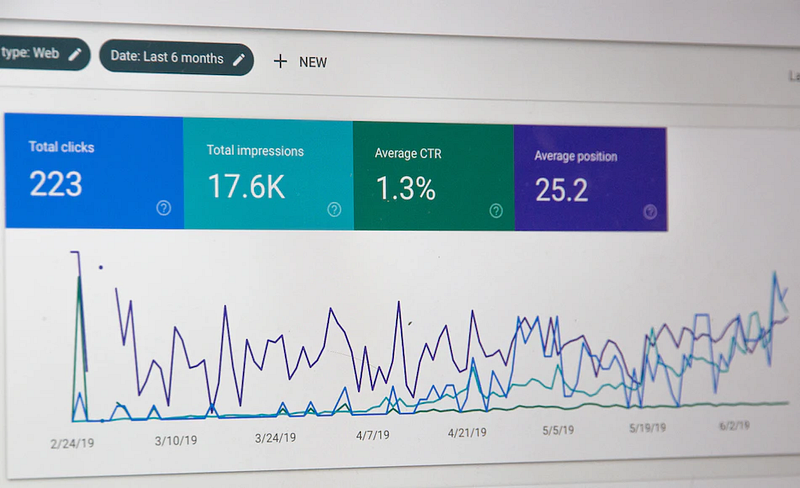Marketing is a critical component of any successful business strategy, but how can you gauge the effectiveness of your marketing agency? Numerous metrics exist to assess and evaluate from lead generation to sales, campaign performance, and overall return on investment. With so many data points to consider, it’s often difficult to know where to focus your efforts. In this article, we’ll explore the primary metrics and strategies for monitoring marketing agency productivity, providing tips for optimizing your marketing output and driving business success.
Whether you’re a marketer striving for better agency productivity or a company owner evaluating their marketing investments – this article has something for everyone! So let’s get started and track your way to marketing success.
We’ll go over the following topics:
- What is Marketing Productivity?
- Why Is It Challenging to Measure Marketing Productivity?
- What Are The Best Metrics For Measuring Marketing Productivity?
- Exploring the Key Marketing Productivity Metrics
- 5 Common Mistakes with Measuring Marketing Productivity
- 8 Ways to Become a Productive Marketing Agency
- Wrap-up: Choose the Right Agency Productivity Software to Measure Marketing Productivity

What is Marketing Productivity?
Before we dive into the best metrics for measuring marketing productivity, it’s important to define what we mean by ‘marketing productivity.’ Marketing productivity measures how effective and efficient your marketing efforts are in achieving desired business objectives. It’s essentially the ratio between inputs (effort and cost) vs. outputs (sales, leads, etc.).
By understanding inputs and outputs, you can compare different marketing strategies side-by-side to determine which initiatives deliver the most value for your company. In other words: Which investments are yielding higher returns? This allows businesses to make more informed decisions about their future campaigns and investments.
Why Is It Challenging to Measure Marketing Productivity?
Marketing productivity can be challenging to measure for a few reasons. Let’s take a look:
Complex Customer Journey
The modern customer journey is more complex than ever before. Customers often interact with a brand across multiple channels and touchpoints, making attributing sales to any marketing tactic or promotional effort difficult. This complexity makes it hard to measure the impact of your marketing efforts on the overall business success.
Here’s an example. Let’s say a customer sees an ad for your product on social media and visits the website. They may then return to the website after reading an email or leave without making any purchases. How can you accurately assess how much of their buying decision was influenced by each channel?
Lack of Data Integration
To accurately measure marketing productivity, you need to be able to track and measure the customer journey across all channels. Unfortunately, many businesses still struggle with siloed data. This lack of integration makes it difficult to get a holistic view of your performance or understand how different channels work together to drive sales.
Comparing data from different sources may not always match up, making it hard to measure marketing productivity accurately. For example, you may have lead generation data from your email campaigns and website analytics from your site. Still, without a unified view of the data, you won’t be able to draw any meaningful insights.

Multiple Metrics and KPIs
Tracking marketing performance is no easy task. There are multiple metrics and KPIs to consider, including website traffic, engagement, lead generation, conversion rate, ROI, customer lifetime value (CLV), etc. It can be overwhelming for businesses to keep track of each metric and measure their impact on the overall success of the business.
Determining the impact or weight of each metric in your marketing efforts is also a challenge. Let’s say; for example, you have gathered several metrics, including website traffic, engagement, lead generation, and conversion rate. How do you determine which metric is more important to measure?
Long-Term vs. Short-term
Measuring the marketing agency productivity is often a long-term process. It’s essential to track progress over time and measure results continuously to get an accurate picture of performance. This can be difficult as some campaigns may take months or even years to yield results, making tracking ROI in real-time hard.
Sometimes, management teams might focus too much on short-term results, such as clicks or impressions, instead of assessing the long-term impact. While these metrics can help analyze trends and performance over time, they don’t always reveal how much your marketing efforts contribute to your sales and profits.
What Are The Best Metrics For Measuring Marketing Productivity?
We can categorize the best metrics for measuring marketing productivity into four broad categories: Input, Quality, Cost, and Output.
Input Metrics
Input metrics measure the time and effort invested in a marketing campaign or initiative. Examples of input metrics include:
- Number of hours spent on marketing activities
- Number of emails sent in a campaign
- Number of social media posts published each month
Input metrics help you estimate the time and effort required to launch a marketing campaign. This is especially useful if you’re trying to compare different campaigns or initiatives side-by-side.
Quality Metrics
Quality metrics measure the quality of the marketing efforts. Examples include:
- Conversion rates of landing pages
- Open and click-through rates for emails
- Engagement rate on social media posts
Quality metrics help you understand how well your campaigns perform and whether they resonate with your target audience. They also give you insight into what needs to be improved upon to maximize ROI.

Cost Metrics
Cost metrics measure the financial investments required for a marketing campaign or initiative. Examples of cost metrics include:
- Cost per lead
- Ad spend on digital campaigns
- Content creation costs (freelance writers, designers, etc.)
- Fees paid to external agencies and partners
Cost metrics tell you how much money is being invested in each marketing campaign and whether it’s providing an acceptable return on investment. This allows you to make more informed decisions about future campaigns and investments.
Output Metrics
Output metrics measure the goals achieved or expected from a marketing campaign. Examples of output metrics include:
- Leads generated
- Sales revenue generated
- Brand awareness created
These metrics tell you how successful your campaigns are in achieving desired business objectives. They also help you measure ROI and identify areas for improvement.
Exploring the Key Marketing Productivity Metrics
Now we’ll explore different metrics for measuring marketing productivity and see how they work.
Lead Generation Metrics
Lead generation is often the starting point of any marketing campaign. It’s important to measure how effectively your campaigns generate leads and understand their quality.
Website traffic and form submissions are critical metrics for measuring lead generation success. However, you must consider social media engagement, such as likes and shares. This can help you better understand people’s interest in your content or brand.
Measuring lead quality is also essential, as this will impact sales outcomes. You can track customer engagement over time, including open rates on emails and website visits. This will show how engaged people are with your content and product offering.
Finally, A/B testing is an effective way to optimize lead generation efforts. You can test different elements of your campaigns, such as copy or visuals, to see which performs best for generating leads.
Sales Metrics
The next step in understanding marketing productivity is measuring the impact on sales. The most important metric here is conversion rate—the percentage of leads that become customers.
You can also measure the deal size and average revenue per customer, which will tell you how effectively your campaigns generate higher-value clients. Additionally, tracking the sales cycle length can reveal where there might be bottlenecks or delays in the process.
Tracking specific campaigns and seeing their direct impact on sales outcomes is essential. This could include email open rates or website visits related to a particular campaign; these metrics can help you understand the most effective campaigns.

Campaign-specific Metrics
Campaign-specific metrics will help you understand the success of individual campaigns and pinpoint areas for improvement.
For example, you can measure website traffic for each campaign to see how effective it is at driving people to your site. Other engagement metrics, such as likes or shares on social media, are also helpful in tracking the reach of a particular campaign.
You should also track conversions from each campaign and compare them with industry benchmarks. This will give you an idea of how successful your campaigns are in generating leads or sales compared to similar initiatives.
Return-on-investment (ROI) Metrics
Return on investment (ROI) is a key metric for measuring marketing productivity. It helps you understand how much value each campaign generates in relation to its cost.
To calculate ROI, simply divide the total revenue generated by the total costs of a campaign. For example, if you spend $100 on ads and generate $200 in revenue, your ROI would be 2X ($200/$100). This means that your campaigns are returning twice what they’re costing you—a great result!
However, it’s important to consider attribution when measuring ROI. You need to accurately track which channels and campaigns actually drove conversions. This is where attribution tools come in handy—they can help you pinpoint which channels are producing the best results so that you can double down on them.
Apart from ROI, there are many other metrics for measuring marketing productivity, such as click-through rates, email open rates, and event attendance. These metrics tell you how your target audience is engaging with your content. Knowing this information allows you to optimize future campaigns through audience targeting, messaging changes, and other techniques.
5 Common Mistakes with Measuring Marketing Productivity
Unfortunately, most businesses struggle to accurately measure marketing productivity because they rely on outdated or inadequate metrics. Here are a few common mistakes:
1. Over-reliance on vanity metrics (e.g., website visits, impressions, etc.): While these metrics are useful for providing a general overview of your campaigns, they don’t provide enough insight into the effectiveness and efficiency of specific marketing activities.
2. Not tracking ROI across multiple channels: To get a more accurate picture of how productive your marketing efforts are, you need to track performance across all channels—not just one or two.
3. Focusing solely on short-term results: Many businesses make the mistake of focusing only on immediate returns from their campaigns instead of considering the long-term value of their investments.
4. Not tracking leads through the sales cycle: It’s important to track how leads move from being identified, qualified, and nurtured all the way through to conversion.
5. Ignoring customer lifetime value (CLV): Understanding CLV will help you make smarter decisions about marketing investments by showing you which customers are most likely to be profitable in the long-term.

8 Ways to Become a Productive Marketing Agency
Let’s run through a few of the most important steps you can take to ensure marketing agency productivity:
1. Set specific, measurable goals: The first step to improve productivity in marketing is setting clear, achievable goals. This should include both short-term and long-term objectives that are tailored to the company’s needs.
2. Utilize data and analytics: Leveraging big data can help you get insights into customer behavior and preferences, which in turn will help you develop more effective campaigns.
3. Invest in automation tools: Automation can streamline mundane tasks such as email marketing, social media posts, etc., freeing up valuable time for your team to focus on more important things like strategy development or content creation.
4. Focus on customer experience: Knowing your customers is essential to creating successful campaigns and strategies, so it’s important to invest in understanding their needs and preferences.
5. Develop an agile mindset: Having the ability to respond quickly to changes in the marketplace can give you a competitive edge over your competitors, so strive for agility and flexibility with your marketing initiatives.
6. Track performance regularly: To measure how effective your campaigns are, you need to track key performance indicators (KPIs) such as return-on-investment (ROI), lead generation rate, etc., on a regular basis.
7. Leverage the power of content: Content is an invaluable asset for any business, as it can help you build relationships with customers and boost SEO rankings.
8. Utilize the right software: From project management to analytics tools, there are a variety of applications that can help your team become more efficient and productive in their workflows.


Wrap-up: Choose the Right Agency Productivity Software to Measure Marketing Productivity
Gaining insights into your marketing performance is essential for any business. With the right agency productivity software, you can track and monitor metrics in real-time to make informed decisions about your campaigns and improve productivity in marketing.
Whether you’re a small startup or an established enterprise, these solutions provide comprehensive reporting tools, detailed analytics, and customizable dashboards that enable you to measure the success of each initiative accurately. With this data, you’ll be able to optimize marketing productivity and maximize ROI.
